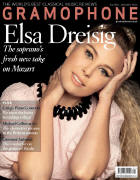Texte paru dans: / Appeared in: |
|
|
Outil de traduction |
|
|
Reviewer: Charlotte Gardner The accompanying material is keen to draw our attention to its pair of premiere recordings of concertos by Jean-Marie Leclair (1697-1764) and André-Joseph Exaudet (1710-62). For me, though, the gold actually begins with the two barely recorded concertos from Jacques Aubert (1689-1753), who in 1734 became the first French composer to publish a collection of violin concertos. Taken from his second collection, Op 26, they’re works that betray his knowledge of Vivaldi’s concertos but nevertheless retain their own national flavour. The sweetly lilting central aria of No 3 in D has all ‘the elegance, the clarity, and the beautiful simplicity of the French style’ that Aubert spoke admiringly of, and it sings with immense sweetness here from Pramsohler’s leading violin. Then one of my album highlights is the E minor Concerto’s final tolling ‘Carillon’, with its succession of dynamic and textural contrasts, rhythmically circling figures and polyphonic interplay, all crisply and classily played with subtle theatre by the Diderot musicians. On to the premiere recordings, and Exaudet’s Concerto in E flat is especially striking. Initially a violinist in Rouen, then at the Paris Opéra and Concert Spirituel, Exaudet clearly knew how to grab an audience’s attention with his instrument, and this beautifully melodic work has you sitting up straight from the soloist’s first statement, high up in sixth position and spiced with jeté bowing (where the bow is bounced on the strings). The variety and virtuosity of the outer movements and the plaintive lyricism of the central slow movement make for a work that constantly throws up fresh interest. Zero in on 2'24" during the final movement to appreciate its cadenza’s combination of textural variety and virtuoso display, and Pramsohler’s effortlessly vivacious and elegant rendering of it. Another winner from Pramsohler and his crack Ensemble Diderot team. |
|




